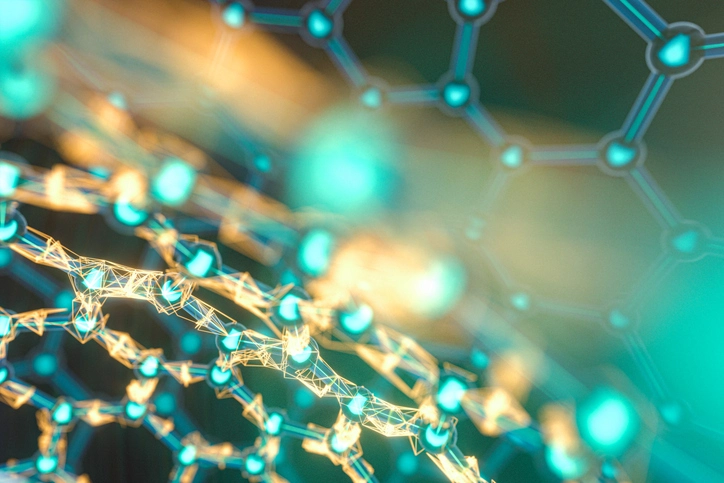Biomaterials research covers various fields, including materials science, chemistry, biology, engineering, and medicine. Developing new biomaterials involves biocompatibility, degradation kinetics, mechanical properties, surface chemistry, and immunogenicity. Researchers in the life sciences field aim to use the unique properties of biomaterials to create innovative solutions for medical challenges and improve patient outcomes. Biomaterials interact with biological systems to develop medical devices, implants, or therapeutic strategies for treating, repairing, replacing, or augmenting tissues or organs within the body. These materials can be synthetic or naturally derived and are designed to interact with biological systems in a predictable and controlled manner.
This blog is part of a series on regenerative medicine research and lab informatics. Read the other blogs in the series here.
Biomaterials serve a variety of functions in the field of medicine and biomedical engineering:
Scaffold for Tissue Engineering
Biomaterials are frequently used as scaffolds to support cell growth and organisation into functional tissue. These scaffolds imitate the extracellular matrix and provide a structural framework for cell adhesion, proliferation, and differentiation.
Drug Delivery Systems
Biomaterials can be designed to encapsulate and transport therapeutic molecules like drugs, growth factors, or genes to specific target sites within the body. Controlled release kinetics can be achieved to optimise the effectiveness and safety of the delivered therapeutics.
Implants and Medical Devices
Biomaterials produce medical implants and devices such as artificial joints, cardiovascular stents, dental implants, and tissue-engineered organs. To function effectively within the body, these materials must be biocompatible, mechanically robust, and durable.
Regenerative Medicine
Biomaterials play a crucial role in regenerative medicine by facilitating the regeneration or repair of damaged tissues and organs. They can provide a supportive environment for endogenous cells to regenerate tissue or serve as carriers for transplanted cells or tissue-engineered constructs.
Diagnostic and Therapeutic Applications
Biomaterials are also used in diagnostic techniques and therapeutic interventions. For example, contrast agents used in medical imaging and biosensors for detecting biomarkers often utilise biomaterials as critical components.
Biomaterials research presents several challenges that researchers must address to develop effective and clinically relevant materials for medical applications. Some of the key challenges include:
Biocompatibility
Ensuring optimal biocompatibility of biomaterials requires a deep understanding of their interactions with living tissues to prevent adverse immune responses and toxic effects.
Mechanical Properties
Biomaterials utilised in tissue engineering and medical implants must possess mechanical properties that align with those of the native tissue to ensure proper functionality and longevity. Achieving the right balance of mechanical strength, flexibility, and resilience remains a significant challenge, especially for load-bearing applications.
Degradation Kinetics
Biomaterials intended for temporary implants or drug delivery systems should degrade at a controlled rate that matches the healing process or therapeutic timeline. Achieving adjustable degradation kinetics while preserving structural integrity can be challenging and necessitates meticulous material design.
Surface Modification and Biofunctionalization
Biomaterials’ surface properties, such as roughness, wettability, and chemistry, are crucial in determining cellular responses and biomaterial-tissue interactions. However, achieving precise control over surface modifications and biofunctionalization strategies remains challenging.
Immunogenicity
Some biomaterials may trigger immune responses or inflammatory reactions upon implantation, leading to tissue rejection or implant failure. Minimising immunogenicity while preserving desired biological functions is a significant challenge in biomaterials research.
Long-Term Stability and Durability
Biomaterials intended for long-term implants or regenerative therapies need to maintain their structural integrity and functionality over extended periods in the dynamic and hostile environment of the human body. Addressing degradation, wear, fatigue, and corrosion issues is crucial for ensuring the long-term success of biomaterial-based interventions.
Regulatory Compliance
Developing biomaterials for clinical applications requires strict adherence to regulatory requirements and standards to ensure safety, efficacy, and quality. Navigating the regulatory landscape and obtaining necessary approvals can be time-consuming and resource intensive.
Translation from Bench to Bedside
Transitioning biomaterials from research laboratories to clinical settings involves overcoming several translational barriers, including scalability, reproducibility, cost-effectiveness, and clinical validation. Bridging the gap between scientific research and clinical implementation is crucial to realising biomaterial-based therapies’ full potential.
To tackle these challenges, scientists, engineers, clinicians, and regulatory experts must collaborate across disciplines. Progress in materials science, bioengineering, and biotechnology is also crucial. Although these challenges are complex, overcoming them can transform healthcare by creating cutting-edge biomaterial-based diagnosis, treatment, and tissue regeneration solutions.
Chemistry-Focused Electronic Lab Notebooks (ELNs): Enhancing Research Efficiency
Proper documentation, research data management, and collaboration are essential in biomaterials research for regenerative medicine. Traditional paper lab notebooks are being replaced by electronic lab notebooks (ELNs), digital platforms allowing researchers to record, organise, and share experimental data. A chemistry electronic lab notebook designed specifically for biomaterials research provides numerous benefits:
Structured Data Organization
Chemistry-focused electronic lab notebooks (ELNs) enable researchers to organise data in a structured manner, including experimental procedures, chemical formulations, material properties, and characterisation techniques, facilitating easy retrieval and analysis of information.
Real-time Collaboration
ELNs facilitate seamless collaboration among research team members, regardless of location. Researchers can share real-time experimental protocols, data, and insights, fostering interdisciplinary cooperation.
Version Control and Audit Trails
ELNs offer version control features to track and document experimental protocols and data changes, providing transparency and traceability essential for regulatory compliance and reproducibility.
Integration with Analytical Tools
Chemistry-focused electronic laboratory notebooks (ELNs) can be integrated with analytical instruments such as spectrometers, chromatographs, or microscopy systems, enabling direct capture of experimental data and facilitating automated analysis.
Security and Intellectual Property Protection
ELNs provide advanced data protection and data security features, including encryption, access controls, and digital signatures, to protect sensitive research data and intellectual property.
As biomaterials evolve and diversify, driven by advances in materials science, chemistry, and biotechnology, the role of chemistry-focused ELNs will become increasingly crucial. These digital platforms will streamline research workflows, foster innovation, and accelerate the translation of discoveries from the laboratory to clinical applications.
In conclusion, the synergy between biomaterials and chemistry-focused ELN software holds immense potential for advancing regenerative medicine. Pharma researchers can drive transformative breakthroughs in tissue engineering, regenerative therapies, and personalised medicine by harnessing the power of biomaterials as therapeutic agents and integrating them with sophisticated digital tools for data management and analysis.
Learn more about our chemistry-focused Electronic Lab Notebook and LIMS.





